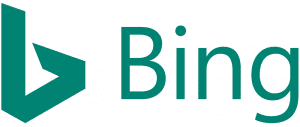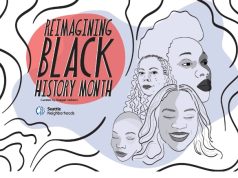Christi Olson On the Differences of Bing
& the Difference It Makes
 True or false? Google and Bing are pretty much alike.
True or false? Google and Bing are pretty much alike.
To the Web newbie, or abecedarian, the differences may seem negligible. The two top search engines offer a deep well of natural, organic search results. Both let you microtarget pay-per-click advertising campaigns. Both spotlight knowledge-graph sidebars on special topics and can provide direct answers to a great many questions.
But to Christi Olson, the explainer-in-chief and Microsoft Evangelist for the Bing search engine, the differences could not be more profound.
To Olson, Bing is no more like Google than Redmond, Wa., is like Mountain View, Ca., or a Washington State ferry is like a cable car.
“They are really two completely separate products,” she makes clear. “We surface different results and we customize Bing results based on interactions across the Microsoft ecosystem.” And wait, we’re just getting started.
On a historic Bing timeline, B.C., “Before Christie,” Bing’s promotional efforts have run a gauntlet of offers and incentives. There was the “Bing It On” Challenge, a blind “taste test” that measured user preference for Bing vs. Google while comparing the results for the same search query side-by-side (Bing won the contest, 56.1% to 32%.) For the high-mileage searcher, the Microsoft Rewards program awarded points that accumulated and resulted in prize incentives for surfing Bing. And still do!
On the very day Bing was launched in June of 2009 as a more human, decision-making search engine, orange spotlights lit up the top of the Seattle Space Needle while a search marketing conference unfolded on the Seattle waterfront below. The keynote speaker at the conference was a thoughtful, even philosophical, manager who would ascend to become Microsoft’s CEO, then the newly-named manager of Bing, Satya Nadella.
Given today’s overabundant Internet search environment, the notion of a single “Challenger brand,” or a face-to-face search engine showdown between Bing and Google has become far less relevant. There is a growing network effect among an increasing number of search partners just as there are new choices in voice search and virtual home assistants like Cortana.
Bing is not so much the Pepsi to Google’s Coca-Cola or the Wendy’s to Google’s McDonalds. The more meaningful question nowadays is who owns the most productive niches — the more affluent users, the most frequent clickthroughs, and the lower cost conversions? There is a strong argument — made by Olson and team— that Microsoft’s search engine is not just advancing, but winning on the fronts that count for more.
Bing and its search partner network, which includes Yahoo, totals more than 6 billion searches each month. That number equates to roughly 35 percent of total search engine share. And a single Bing ad buy can reach more than 160 million unique searchers across the Bing network.
In this interview, we wanted to put into sharper focus the many things that distinguish Bing search from its competitors and bust the myth that search has become a parity or commodity service. With the search pendulum swinging away from matching keywords to online behavior and personal search history as major “ranking factors,” the conversation has changed.
Seattle24x7: Let’s jump right into the differences between Bing and Google. Bing’s users are purportedly very different, but how?
 Olson: We do have a different audience on Bing than we tend to see across the competitive set. On Bing, our audience tends to skew slightly older within our demographics. So our sweet spot extends to age 64. These individuals tend to have higher incomes based on our internal data, as well as industry reports. As a consequence, they have higher proportionate income. The conversion rates also have shown to be higher as well as the average order value in most verticals. I’m not just speaking as an evangelist. I have advertised through both Bing and Google as a marketer for many years. I’ve noted the trends across the board in almost every single job I’ve had.
Olson: We do have a different audience on Bing than we tend to see across the competitive set. On Bing, our audience tends to skew slightly older within our demographics. So our sweet spot extends to age 64. These individuals tend to have higher incomes based on our internal data, as well as industry reports. As a consequence, they have higher proportionate income. The conversion rates also have shown to be higher as well as the average order value in most verticals. I’m not just speaking as an evangelist. I have advertised through both Bing and Google as a marketer for many years. I’ve noted the trends across the board in almost every single job I’ve had.
Seattle24x7: One of the sectors that stands out is financial services and insurance. Is that a prime example of a more mature user demographic and a longer selling cycle that favors Bing?
Olson: We just completed a study about a consumer’s decision journey for financial services. When you think about choosing financial products and services, it’s typically not a one-time transaction or short-term relationship, but more like a 30-to-40 year process. Your investment value so often depends on your stage of life. In every industry, in each vertical, the questions we are working on with our advertisers are what does your buyers’ decision journey look like? How will your strategy evolve based on how consumers engage and interact with you over time?
Vive La Difference! BING At-A-Glance
SOCIAL MEDIA
Microsoft’s deals with both Facebook and Twitter afforded Bing an early edge. While Google developed an API to display tweets in search results, Bing’s greater access to social data allows it to feature more trending news from social media in its results.IMAGE & VIDEO SEARCH
Yes, Google owns YouTube but Bing’s grid layout of video thumbnails presents more videos without scrolling, offers previews when hovering over videos and lets users watch without leaving the results page. Bing’s image search results feature higher-quality images and let users filter results according to tall, wide or square layout.LOOK & FEEL
Some feel Bing’s graphical presentation simply looks better — cleaner and less cluttered, with social media news feeds presented in easy-to-navigate grids (which further adds to the social media integration).REWARDS & FREEBIES
With Bing’s Microsoft Rewards program, users can receive points for every search — points that can be redeemed at Amazon, Starbucks and other popular purveyors of goods. The points-per-search ratio is not high, but they can add up with enough volume.BING ADS
Bing Ads generally experience better ad positions than their Google counterparts due to less competition. And while Google blocks queries containing negative keywords, even if they also contain keywords, Bing allows keywords to supersede negatives, so that an ad will still show. Cost is another differentiator. By some estimates, the cost per click on Bing is a third lower than on Google.
Seattle24x7: Another area where Bing and Google are different is how each displays search results?
Olson: We conducted a lot of research to look at the question, “What is the impact of appearing in the search results?” Not just receiving a click, but the overall value of having an ad showing up above the fold? For example, Bing still maintains a paid ad presence on the right-hand side of the Web page, or the “right rail.” Those ads have been shown to represent a statistically significant improvement to awareness, recall, and market leadership across the board. What that means is that even if you’re just making an impression, there’s value to being seen in the search result. You can create that presence in Bing not just by being on top of the page in positions one or two, but by being in positions four, five, and six, which are on the right rail. Impressions count!
Seattle24x7: The issue of user privacy is one of increasing concern these days, both in America and across Europe. Microsoft and Google both have large footprints and offer services like Hotmail or Gmail where the data tracks of users can be recorded and used in advertising.
According to Google’s Terms of Service, every keystroke or mouse click made while being logged into any Google account can be used to customize the search experience and serve personalized ads. Google goes a step further in displaying ads inside of Gmail based on scanning the actual content inside of emails. Now this content-based surveillance may be leaking to Google display ads we well. How does Bing look at this issue?
Olson: Privacy and security are so important to us. Our CEO has spoken about “earning the trust of our users by focusing on “six key privacy principles.” They’re all about making sure that we are putting users in control of their privacy — with tools that allow them to be in control of what data is accessed or not accessed. Being transparent means that we have a portal when you log-in to a Microsoft account, such as Hotmail or Outlook, and it lets you know what data is being collected and how that data is being used.
Does Bing track keystrokes to collect data about users? No, we do not. The only time or place where keystrokes are used would be in auto-completing search queries. Based on certain letter combinations, this is what we think you’re going to be searching for. So it’s not really collecting data, it’s looking at how people have searched in the past and predicting what we think you might be looking for.
What is really interesting when you think about personalized data is if you’re in a logged-in state in Bing, and you have given Bing access to look at your search history. In that case, we can actually personalize the search results based on how you’ve engaged and interacted with search before. So, again, it goes back to the predictive machine learning algorithm— how you’ve interacted with the search results, what you’ve clicked on, the type of content you use, to show you search results that are the most relevant to your search experience.
At a time when so many security breaches have taken place, we are doing the best we can to protect user data with very strong encryption services. We haven’t had a data breach yet. We are also committed to strong legal protection in accordance with the many different privacy laws across the globe.
Essentially, we consider security and privacy as fundamental human rights.
 Seattle24x7: Bing has always placed a lot of emphasis on the graphical user experience including some really stunning visuals that appear in a Web browser on a desktop display?
Seattle24x7: Bing has always placed a lot of emphasis on the graphical user experience including some really stunning visuals that appear in a Web browser on a desktop display?
Olson: Yes. We think a lot about the quality of the search experience for both desktop and mobile. We still believe there’s a lot of value in the desktop experience. For example, when you’re at work, you’re on your PC so it’s still very important to think of the desktop as the place that people are going to continue to be using in work environments. You don’t want to be on just one platform, you really need to have a strategy that looks at both. When talking to advertisers about their brands, we want to understand the difference of intent when they’re on a mobile device than when they’re on a PC. Developing a strategy for both instances is vital from a paid search standpoint. Bing has not eliminated the “right rail” (right hand column) of sponsored ads. We want to be able to integrate more sponsored ad messaging within organic search results.
Seattle24x7: At the Seattle Interactive Conference, you spoke about artificial intelligence. How is AI at Microsoft being applied to search?
Olson: Cortana, our personal digital assistant, is essentially powered by Bing. So, in our universal search, all entities, structured data and knowledge within what we call the Knowledge Graph, and a separate graph called Satori, powers Cortana on the back end. So Cortana is one of the central ways that AI is being used within Bing search.
Another great example where AI is being applied is to Bing ads. Our paid search ads essentially use AI machine learning on the back end. One of the ways this works is known as enhanced CPC or ECPC, where an advertiser can give us a range, saying, “This keyword is important to me.” So ECPC goes to work on the bid optimization backend based on the CPA target (cost per action or cost per acquisition) that’s been set.

Seattle24x7: What is the life of a Bing Search Evangelist like? How do you spend your day?
Olson: Right now I’m spending probably about 25-35% of my time on organic search, and the balance on paid search. Part of what I do on the organic side is work with our Webmaster Tools team to be the voice of the customer and provide feedback. What are people saying? How are they reacting to new features or updates? What content or materials can we develop to best answer the questions people are asking?
At Microsoft, we have entire teams that are fully dedicated on the support, service and analytics ends, and I check in with them regularly. I want to know what’s happening from a metrics standpoint and how I can help our advertisers best leverage our technologies.
One of the things you will hear us talking about, especially right now as we go into the holidays, is how cost-per-click is becoming more competitive. Especially on the paid search side. So many businesses rely on the holiday season to drive their revenue for the entire year.
We are talking to advertisers across the industry, advising them to be prepared. Bing can be very economical in terms of CPC on a regular basis, but you will start to see competition rise during the holiday time frame. It won’t just be on Bing — you’ll also see this happen on Google. As the metrics come in we can go back to specific verticals and say, here’s how you’re doing as compared to the competition in your vertical.
Seattle24x7: We wish all our friends at Bing a very happy holiday season as you “Bing in”the New Year!”” [24×7]




















